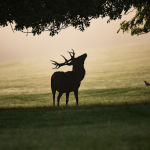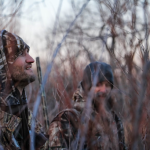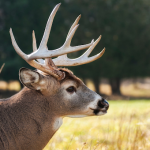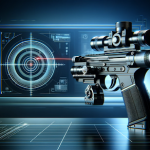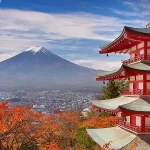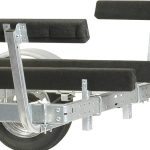
Camouflage, a term derived from the French word “Camoufler,” meaning to disguise, has been a vital part of hunting, warfare, wildlife photography, and biology for as long as life has walked on this planet. When it comes to hunting, an essential part of human survival and culture, hunters have developed various tools and techniques to increase their chances of success. One such tool, camouflage, is borrowed from the animal kingdom itself. It’s not simply a fashion statement (though many treat it as such, especially in areas where hunting is a more popular pastime) but a strategic choice that can make or break a hunting expedition.
Here, we’ll explore the art and science of camouflage and what makes it an indispensable tool for hunting.
The Basics of Camouflage
Camouflage, in its essence, is the practice of blending into the natural environment to avoid detection by prey or other hunters. It allows avid hunters to become virtually invisible to their targets, allowing them to creep closer and ensure more accurate shots. Effective camouflage serves as a vital component of hunting gear and clothing, but what exactly makes it suitable for hunting?
Visual Deception
The primary goal of camouflage is visual deception. It tricks the eyes of the observer (be it a game animal or another person) into perceiving the camouflaged object as part of the background or as something uninteresting and non-threatening. This is achieved through combining colors, patterns, and textures that mimic the surrounding environment.
For instance, camouflage patterns for hunting in woodland areas typically incorporate shades of green, brown, and earthy tones, along with patterns that resemble leaves and branches. In contrast, desert camo uses sandy and rocky colors to blend into arid environments. By matching the color palette and patterns of the environment, hunters can effectively become invisible to their quarry.
Breaking Up the Silhouette
Another key aspect of camouflage is breaking up the silhouette of the hunter. When an animal scans its environment, it’s not just looking for color and patterns but also for distinct shapes that don’t belong. By using camouflage clothing that features irregular patterns and shapes, hunters can break up their human outlines, making them less conspicuous.
This is why camouflage clothing often includes details like brush strokes, mottled patterns, and occasionally, at least more recently, 3D elements like leaves and twigs. These elements disrupt the outline of the hunter’s body, making it harder for prey to recognize them as a potential threat.
Reducing Reflection and Shine
But what most don’t realize when buying hunting equipment is that camouflage is not limited to clothing and gear; it extends to equipment, too. There are countless firearms, optics, and hunting accessories that produce glints and reflections that give away a hunter’s position. A quality camouflage cover or wrap for firearms can help reduce the shine and reflections, making them less likely to catch the eye of game animals.
The Science Behind Effective Camouflage
To appreciate what makes camouflage suitable for hunting, it’s essential to understand the science behind it. Effective camouflage is not just about choosing the right colors and patterns; it’s also about how these elements interact with an animal’s vision.
Animal Vision
Different animals have varying levels of visual acuity and color perception. Understanding the vision of the game you’re hunting is crucial for selecting the appropriate camouflage. For instance, deer are known to have excellent low-light vision but are less sensitive to the color red. Turkeys, on the other hand, have sharp color vision and can detect red and blue hues.
Camouflage patterns are designed to exploit the limitations of an animal’s vision. For example, some patterns might use red hues to blend into a predominantly green background, knowing that the prey animal won’t easily distinguish red. The science of animal vision is a critical factor in designing effective camouflage patterns.
Motion Detection
In addition to color and pattern, movement can also give away a hunter’s position. Many game animals are highly attuned to detecting motion. Effective camouflage conceals the hunter’s appearance and helps them move discreetly. This can involve slow, deliberate movements or using natural cover to mask any sudden shifts.
Some camouflage clothing even incorporates 3D elements that move with the breeze, mimicking the environment’s rustling leaves or swaying branches. These small movements can help break up the hunter’s outline and make them less conspicuous to watchful prey.
Matching the Environment
One of the fundamental principles of camouflage is matching the environment. Effective camouflage considers the hunting location’s specific terrain, vegetation, and lighting conditions. For example, what works in a forest won’t necessarily be suitable for hunting in a marshland or snowy tundra.
Hunters often take multiple sets of camouflage gear for different environments, ensuring they can adapt to the specific conditions of each hunting expedition. This level of attention to detail is crucial for achieving optimal concealment.
The Role of Camouflage in Ethical Hunting
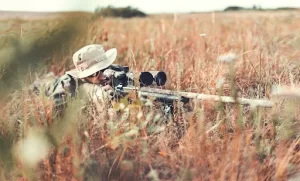
Camouflage plays a significant role in ethical hunting practices. Ethical hunting involves fair chase and giving game animals a reasonable chance to escape. Camouflage contributes to this by reducing the chances of detection, allowing hunters to get closer to their prey while minimizing the animal’s stress and suffering.
Reducing Stress
When an animal detects a potential threat, it can experience significant stress. This stress can have negative effects on the animal’s health and well-being. Ethical hunters aim to minimize this stress by using effective camouflage to remain hidden until they have a clear, humane shot.
Enhancing Accuracy
Camouflage helps hunters get closer to their prey and allows for more accurate shots. When a hunter is concealed, they can take their time to assess the situation, choose the right angle, and make a precise shot. This reduces the risk of wounding an animal without killing it outright, which is, unfortunately a common occurrence in hunting.
Promoting Conservation
Ethical hunters are often strong advocates for conservation efforts. By practicing responsible hunting and using camouflage to minimize stress and maximize success, hunters contribute to the sustainable management of wildlife populations. They are crucial in controlling animal populations to prevent overpopulation, habitat degradation, and disease outbreaks.
Camouflage Gear and Techniques
Camouflage extends beyond clothing, as previously mentioned, to encompass various gear and techniques that hunters use to enhance their concealment.
Ghillie Suits
A ghillie suit is likely the most iconic form of camouflage, as it had an integral part in movies and television. They are essentially entire suits covered in fabric or material strips that mimic the hunting environment’s natural vegetation. These break up the silhouette of the hunter, making them blend seamlessly into the surroundings.
Face Paint
The human face is one of the most noticeable parts of the body, and it’s crucial to conceal it effectively. Many hunters use camouflage face paint to cover exposed skin, ensuring that even their facial features do not give them away.
Blind and Tree Stand Camouflage
Hunters often use blinds or tree stands to gain a better vantage point or to hide their presence. These structures are also camouflaged to match the surrounding environment, making them virtually invisible to game animals.
Conclusion
Camouflage is much more than just a fashion statement for hunters; it’s a strategic tool that enhances the art and science of hunting. Effective camouflage considers the psychology of prey, the diversity of hunting environments, and the ethics of fair chase. Whether through clothing, gear, or techniques, camouflage remains indispensable for hunters, allowing them to blend into their surroundings and engage in ethical, sustainable hunting practices.

